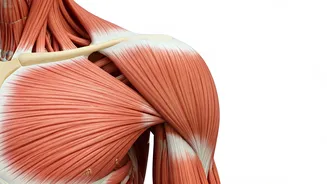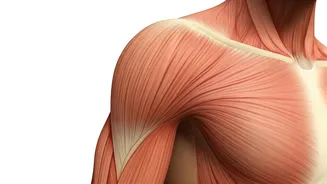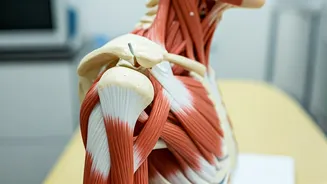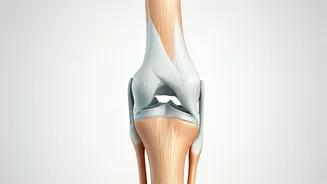Warm-up: Shoulder Rolls
Before diving into any exercise routine, warming up is key to prevent injuries and enhance effectiveness. Shoulder rolls are a simple yet effective warm-up.
Begin by standing or sitting tall, keeping your back straight and your shoulders relaxed. Slowly roll your shoulders forward in a circular motion, bringing them up towards your ears, then forward and down. Perform this for 10 repetitions. Next, reverse the motion, rolling your shoulders backward in a circular movement, again for 10 repetitions. Shoulder rolls improve circulation in the shoulder area and loosen the muscles, making them more receptive to the exercises that follow. They also help improve posture, reducing the likelihood of pain during the day. Consistent practice can increase flexibility and reduce stiffness.
The Wall Slides
Wall slides are an excellent exercise to strengthen the muscles around the shoulder blades, enhancing posture and stabilizing the shoulder joint. To perform this, stand with your back flat against a wall, with your feet shoulder-width apart. Position your arms with your elbows bent at a 90-degree angle, forearms and hands touching the wall. Slowly slide your arms up the wall, keeping your elbows and hands in contact, until you reach as high as comfortable. Hold for a few seconds, then slowly slide your arms back down to the starting position. Repeat this movement 10-15 times. Make sure to maintain contact between your lower back and the wall. This exercise promotes better movement patterns and improves the activation of the muscles responsible for shoulder blade stability.
Cross-Body Stretch
This stretch helps relieve tension and increase flexibility in the shoulder joint. To perform this, stand or sit comfortably. Extend one arm across your body, towards your opposite shoulder. Use your other hand to gently pull the extended arm closer to your chest, deepening the stretch. Hold this position for 20-30 seconds, feeling the stretch in the back of your shoulder and upper arm. Repeat this on the opposite side. The cross-body stretch targets the posterior shoulder muscles, which are often tight from activities like prolonged computer use or poor posture. Regular performance of this stretch can help to release muscle knots and reduce stiffness, contributing to improved shoulder mobility and reduced pain.
Pec Stretch: Doorway
Tight pectoral muscles can contribute to shoulder pain and poor posture. The doorway pec stretch can help to counter these issues. To do this, stand in a doorway with your arms bent at 90 degrees, forearms resting against the doorframe. Gently lean forward, feeling the stretch across your chest. Hold this stretch for 20-30 seconds, breathing deeply. This stretch can release tension in the chest muscles and allow for better shoulder blade movement. This helps to pull the shoulders back and improves posture, creating more space in the shoulder joint and easing pain. Consistency in performing the doorway stretch helps to enhance your shoulder's overall range of motion.
Pendulum Exercise
The pendulum exercise is a gentle and effective way to increase range of motion and reduce stiffness in the shoulder. To perform this, stand and lean forward, supporting yourself with one hand on a table or chair. Let the arm with the painful shoulder hang down loosely. Gently swing your arm back and forth, side to side, and in small circles. Start with small movements and gradually increase the range as comfortable. Perform the exercise for 1-2 minutes. The pendulum exercise is particularly beneficial for those with limited mobility and stiffness in their shoulder. It helps to lubricate the shoulder joint and encourages a gentle stretch of the shoulder muscles.











